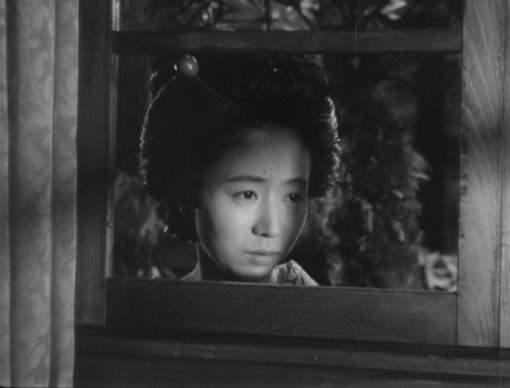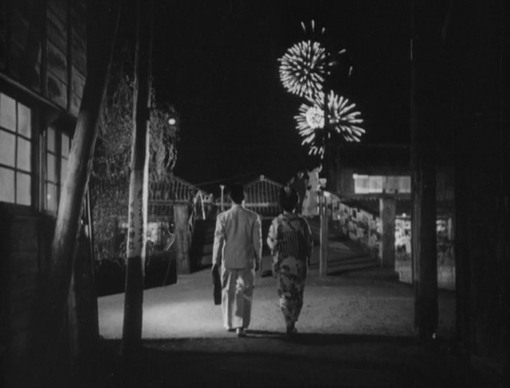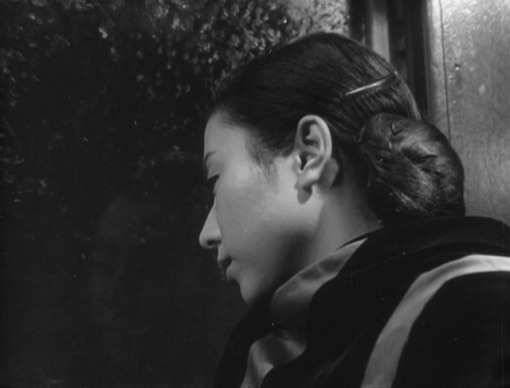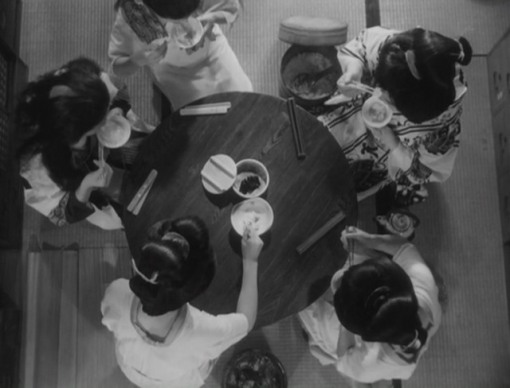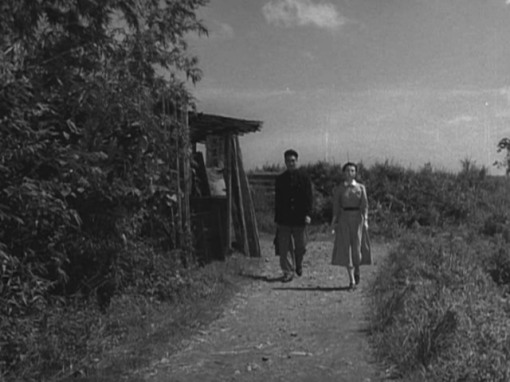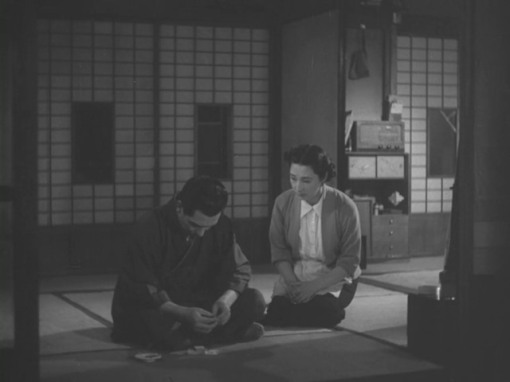Kaneto Shindo would go on to have a stronger association with the Japanese New Wave, but like Keisuke Kinoshita (who he wrote a screenplay for years before this film) and Masahiro Shinoda, he seemed to get his break before such a movement became clearly defined. Miniature is not his first film, but it is one of his earliest and it places him in a precarious time and position. The influence of his mentor, Kenji Mizoguchi, cannot be missed and yet, within a film told mostly through interiors, Shindo tries to find a way to tell a story in a new way. I’d be lying if I said I am enamored with Miniature, but I still find it unique and its place in history is often ignored in crafting a more convenient narrative of Japan’s cinematic history. I’ve always found the idea of a “classic cinema” and “a New Wave” to be frustrating and simple, Miniature elaborates on the fallacy of such a construction.
Ginko leaves behind her hometown and her family of shoemakers to become a geisha in Chiba. She is overwhelmed at first, but quickly adapts to the pressures of the job. She falls in love with a young med student, Kurisu, but warns him that their relationship will never work because of her profession. Later, the madam of her house dies and grants Ginko to be her replacement. Frightened by the demands of her madam’s husband, she runs away to Takada. There, she falls for another young man, but their interactions are interrupted by his mother. Heartbroken, she returns to Tokyo, bitter and hardened by her experiences. She worries she’ll never escape from her profession and makes a concentrated effort to make sure her younger sisters won’t have to follow in her footsteps.
Like his mentor, Kenji Mizoguchi, Shindo’s tale of labor goes the route of tragedy. It is indeed hard to escape the comparison between Miniature and Mizoguchi’s Life of Oharu. Here, Ginko does not descend down a cycle of abuse, but her life is similarly transient. In both films, the constant movement is self-defense, ironically the physical movement clashes with the lack of social mobility for its heroines. Ginko, late in the film, expresses her deep anxiety that she’ll die a geisha. Oharu, on the other hand, knows she’ll die a sexworker, her dread is wondering when she will be killed. Additionally, Ginko has options, which might be Shindo’s crucial modification of the tragedy. She can escape, but the other options are equally uninviting.
Early in the film, after she leaves Chiba, Ginko returns to her family. She has chosen that life as a shoemaker will be better than life as a geisha (she states this directly at one point) but once she’s returned, she discovers that shoemaking is similarly unrewarding. Ginko’s options are just all upsetting (it is a tragedy after all) but at least she is given the agency to choose her route. Eventually, she chooses to try life as a geisha again. Her earlier lament is not a lie, labor will always be dispiriting, and we have to weigh other factors. For Ginko, a life of her own, away from her family, is the incentive to resume an occupation she loathes.
While there some splendid outdoor scenes, a majority of Miniature takes place inside. As someone who would go on to make The Naked Island, you can see how this may have been a limitation to Shindo. Early on, he tries something interesting, though. The interior sequences in Chiba are filmed like a bad dream: every shot seems to be crowded with bodies in motion, inducing nausea. The few still moments are framed in slanted shots, zooming in on the subjects. Meanwhile, Ginko returns to her family and is photographed in loving tracking shots. In the film’s most moving moment, she returns to her childhood room and falls asleep viewing artifacts of her past. The camera glides to the window, as if to embody the mobility of her daydream. Only in this particular fragile space is she able to dream of a better life. Alas, dreams are the only breaks given from a brutal reality.

